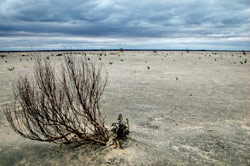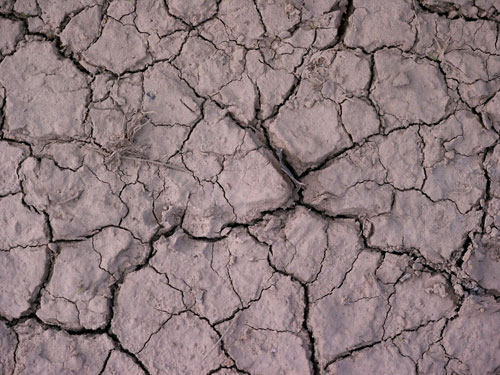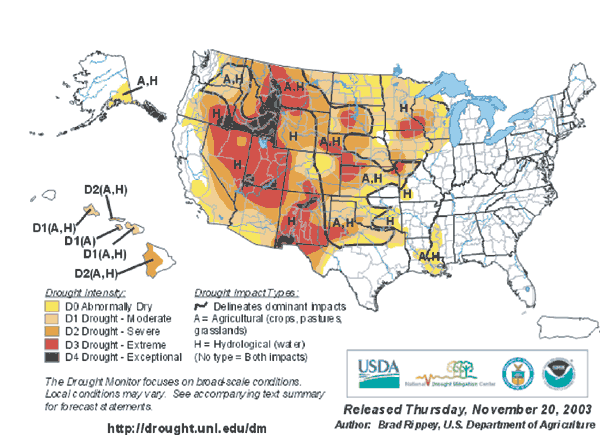


Drought is a normal, recurring feature of the climate in most parts of the world. Having adequate drought mitigation strategies in place can greatly reduce the impact.
Generally, rainfall is related to the amount of water vapor in the atmosphere, combined with the upward forcing of the air mass containing that water vapor. If either of these are reduced, the result is drought.
Factors include:
* Above average prevalence of high pressure
systems
* Winds carrying continental, rather than oceanic air masses (i.e. reduced water
content)
* El Nino ( and other oceanic temperature cycles)
*Deforestation
* Climate change has substantial impact on agriculture thought the world,
especially in developing nations
Consequences

Periods of drought can have significant environmental, economic, and social consequences. The most common consequences include:
* Death of livestock
* Reduced crop yields
* Wildfires, such as Australian bushfires, are more common during times of
drought
* Shortages of water for industrial users
* Desertification
* Dust storms, when drought hits an area suffering from desertification and
erosion
* Malnutrition, dehydration and related diseases
* Famine due to lack of water for irrigation
* Social unrest
* Mass migration, resulting in internal displacement and international refugees
* War over natural resources, including water and food
* Reduced electricity production due to insufficient available coolant
* Snakes have been known to emerge and snakebites become more common
Stages

As a drought persists, the conditions surrounding it gradually worsens and its impact on the local population gradually increases. Droughts go through three stages before their ultimate cessation.
1. Meteorological drought is brought about when there is a prolonged period with less than average precipitation. Meteorological drought usually precedes the other kinds of drought.
2. Agricultural droughts are droughts that affect crop production or the ecology of the range. This condition can also arise independently from any change in precipitation levels when soil conditions and erosion triggered by poorly planned agricultural endeavors caused a shortfall in water available to the crops. However, in a traditional drought, it is caused by an extended period of below average precipitation.
3. Hydrological drought is brought about when the water reserves available in sources such as aquifers, lakes, and reservoirs falls below the statistical average. Like an agricultural drought, this can be triggered by more than just a loss of rainfall. For instance, Kazakhstan was recently awarded a large amount of money by the World Bank to restore water that has been diverted to other nations from the Aral Sea under Soviet rule. Similar circumstances also place their largest lake, Balkhash, at risk of completely drying out
Where do droughts occur?
Droughts usually occur in hot dry areas of land. In most cases the area is dry because there is a very minimal rainfall. The rain that does fall will be quickly absorbed into the ground or blown away by the dry air flow that moves along the ground. Therefore the land is very dry and not many things can live there.

Major Droughts
| Year | Place | Cause | Destruction |
| 1931-1938 | Great Plains of the USA | Severe wind storms dried out the land and blew the top layer of soil away | Cars, homes and farms destroyed in dust storms |
| 1972-1974 | Africa | Decreased Rainfall | The countries financial business went down |
| 1976 | Britain | It did not rain from June 1975 to September 1976. Droughts were very rare in England | Water rationing was greatly needed in the larger cities of Britain |